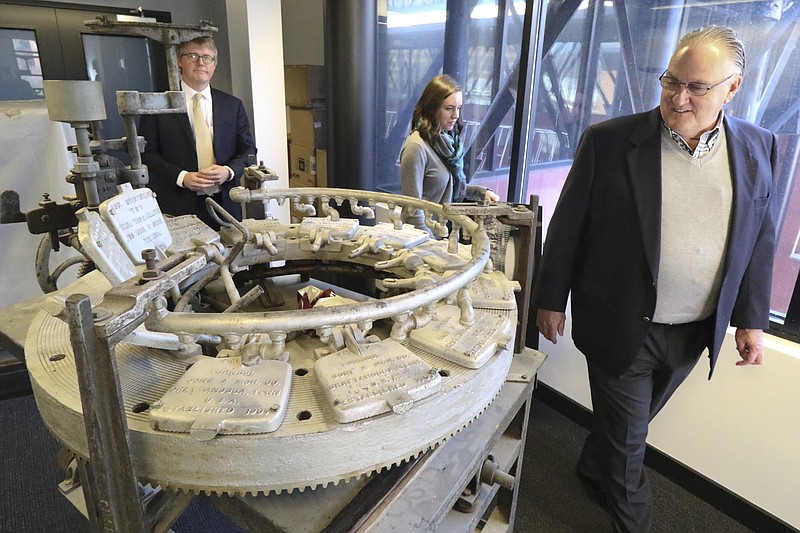To become a member
To become a Chattanooga History Center member or make a donation visit www.chattanoogahistory.org.
Few New World cities have a history as rich as Chattanooga -- especially cities not sitting on a coastline.
But we're special. And it's time for doubters to come on board.
It's time for people here to recognize our history began long before Spanish explorers made their way to Moccasin Bend and far before the time when Ross's Landing became a Tennessee River trading post that separated white settlers' land from Indian Territory.
Our history also encompasses the trailhead of the Trail of Tears, the Civil War's turning points, the dawn of the industrial revolution and both the death knell and rebirth of southern manufacturing. We boast the Chattanooga Choo Choo, Coca-Cola, Little Debbies and Adoph Ochs, the man who cut his teeth on the Chattanooga Times then became the face of The New York Times.
Our modern history is nothing to ignore, either. We're America's "dirtiest city," and we turned our reputation on its head with our effort to clean the air and water. We're the only major city to lose more than 10 percent of its population in the 1980s and then regain our population and growth in the next two decades.
Now we need to rally to finally showcase this history.
Half a decade back, we had a plan for $10.5 million revolutionary museum with cutting-edge exhibits. The dream is still alive, but some $3.2 million short of what is needed to actually complete the exhibits and open the doors to a 11,000-square-foot history center on the second floor of the concrete-and-glass tower across the plaza from the Tennessee Aquarium.
In Sunday's paper, Times Free Press reporters Kevin Hardy and Lynda Edwards took a long look at the history center's struggle to open in a story headlined "A Dream Deferred."
The history center's deferred opening has lengthened by more than two years past its original planned date largely because of lagging donations and underestimated costs. Over months and years, those factors snowballed: The museum, with no revenue, lost more than half a million in fiscal 2014.
The museum spent about $4 million on construction and about $4.5 million on contracts with the prestigious New York-based consultant and museum planner Ralph Appelbaum Associates, which has worked on the NASCAR Hall of Fame in Charlotte, N.C.; The Newseum in Washington, D.C.; and the Country Music Hall of Fame in Nashville.
Here at home the museum and its board spend $163,321 on salaries annually. Executive Director Daryl Black earns $86,000 a year. His curator earns $34,000. No one has health insurance. There is also a staffer who oversees educational outreach programs such as weekend classes, and a deputy director. Although the museum is not open, tax filings for 2013 show $153,326 spent on marketing. The bulk of that goes to The Johnson Group which manages public relations and all social media for the museum, including its website.
Board member and treasurer -- and the museum's volunteer treasurer -- Carl Henderson, of the Henderson, Hutcherson and McCullough CPA firm, said the project hasn't gone over budget. Nor is there any reason to doubt the vision of Black, who became museum director in 2009. Rather, Henderson says, the initial $10.5 million fundraising goal was simply inadequate.
And no one could have predicted how dramatically the funding landscape would change, Henderson says.
City government pulled its funding after initially giving $578,000 in operations and capital. Officials said they might reconsider new requests once the museum is operational. In recent years, the county has refused museum funding requests. Jack Lupton, a giant in the world of civic giving, died in 2010. So far the board has found it hard to identify the new money players in town who would support cultural priorities such as the museum.
Chattanooga's history shows we don't give up easily and we know how to rise to opportunity.
Let's show once again -- to ourselves and the world -- who and what we are.
